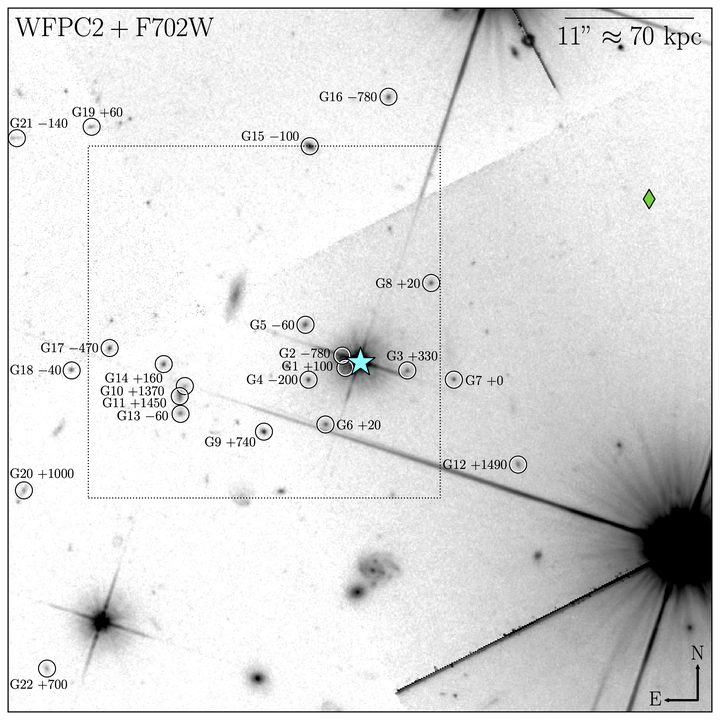Discovery and origins of giant optical nebulae surrounding quasar PKS 0454-22
Discovery and origins of giant optical nebulae surrounding quasar PKS 0454-22
Jun 12, 2021· ,,,
,,,
Dr. Jakob M. Helton
Sean D. Johnson
Jenny E. Greene
Hsiao-Wen Chen
 Figure 1 from Helton et al. (2021, MNRAS, 505, 5497)
Figure 1 from Helton et al. (2021, MNRAS, 505, 5497)Abstract
We report optical integral-field spectroscopy in the field of one of the most luminous quasars in the $z < 1$
Universe, PKS 0454−22, with the Multi-Unit Spectroscopic Explorer. These data enable the discovery of three large ionized nebulae emitting in $\mathrm{[OII]}$
, $\mathrm{H}\beta$
, and $\mathrm{[OIII]}$
with projected areas of $1720$
, $1520$
, and $130\ \mathrm{pkpc}^{2}$
, which we refer to as N1, N2, and N3, respectively. N1 spatially and kinematically surrounds the quasar host and five nearby galaxies. The morphology and kinematics of N1 are most consistent with stripped interstellar medium resulting from ongoing interactions. Its ionization properties can be explained by quasar photoionization. N2 spatially and kinematically surrounds two galaxies that are at projected distances of $d \approx 90\ \mathrm{pkpc}$
and line-of-sight velocities of $\Delta v \approx 1410\ \mathrm{km/s}$
from the quasar. The morphology and kinematics of N2 are also consistent with stripped interstellar medium. However, its ionization state requires additional ionization sources beyond the quasar, likely from fast shocks as it moves through the hot halo associated with a galaxy overdensity around the quasar. N3 is not coincident with any galaxies with secure redshifts, and may arise from a cool gas structure in the intragroup medium or a dwarf galaxy. These large ionized nebulae demonstrate that interactions can produce cool gas structures on halo scales, while also possibly facilitating quasar fueling. The growing availability of wide-area integral field spectroscopic data will continue to reveal the morphologies, kinematics, and conditions of the gas flows, which may fuel galaxy and black hole growth.
Type
Publication
Monthly Notices of the Royal Astronomical Society, Volume 505, Issue 4, pages 5497-5513